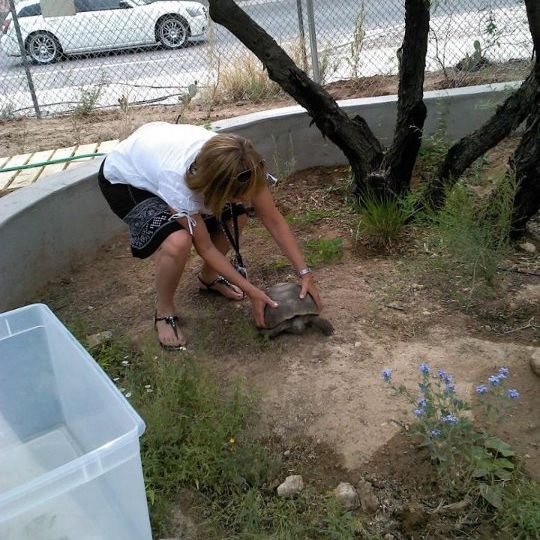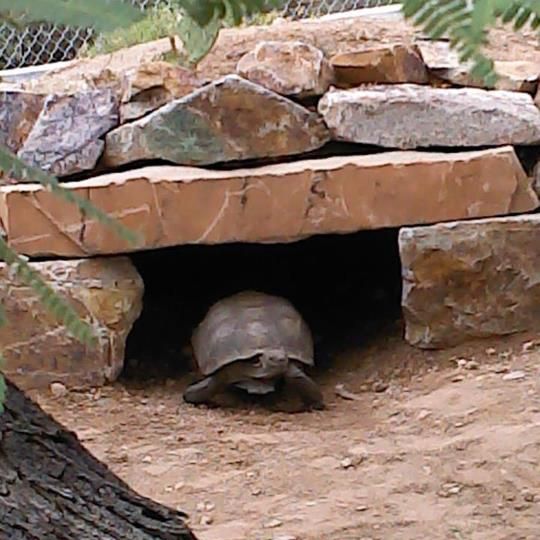BELL 2
Borton’s Environmental Learning Lab
One of the unique features of Borton is Borton’s Environmental Learning Lab (or BELL) – a 2.5 acre desert area immediately south of the Borton playground. Though it is surrounded by the school, businesses, and other development, this area contains many native desert plants, and has attracted many birds and small animals.
Borton students have created many pieces of artwork to enhance BELL. The biggest is the Lizard Bench, but there are many other ceramic projects throughout the area. The latest addition is a tortoise enclosure, built just south of the pond.
Bell History
The 2.5 acres of land directly south of the Borton playground has been owned by TUSD for years, though it was generally viewed as property for future development. Fortunately, that development never happened. In the early 1990’s, Borton received a Heritage Grant. At that time, this inner-city desert site was transformed into a place which would attract native bird species, as well as a place for students to experience hands-on study of the desert environment.
The important features of the site were created at that time: the main loop trail, the pond and drip system, the cactus garden, the butterfly and hummingbird areas, and the ramada. It was then named the Borton Bird Sanctuary.
To continue as a viable educational site, this property requires three things: a long-range vision for development and usage, constant maintenance, and ongoing orientation and education of the ever-changing Borton community. Since the initial development phase, Borton has sought and received Educational Enrichment Foundation (EEF) grants, NEFF grants and Exxon Math/Science grants to support its continued development and use by students. Since the site’s focus is truly on student usage, we renamed it the Borton Environmental Learning Lab, or BELL for short.
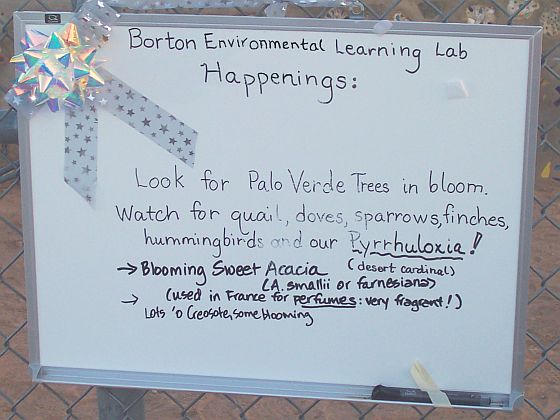

There is a Nature Trail which guides visitors through the various parts of the area.
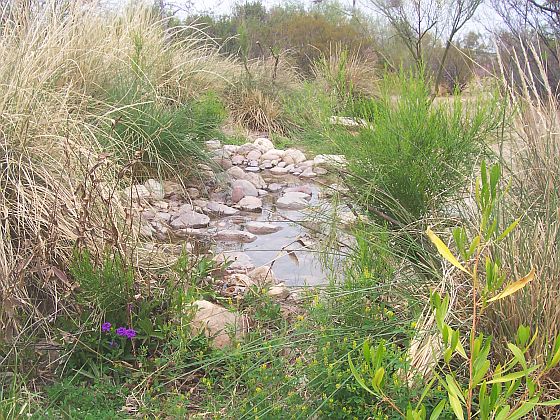
The pond is kept wet by the irrigation system.
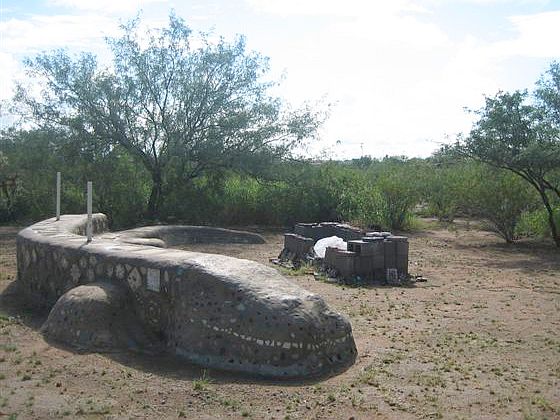
The Lizard Bench was built in the spring of 2006 as a place for a class to sit for lessons about the desert environment.
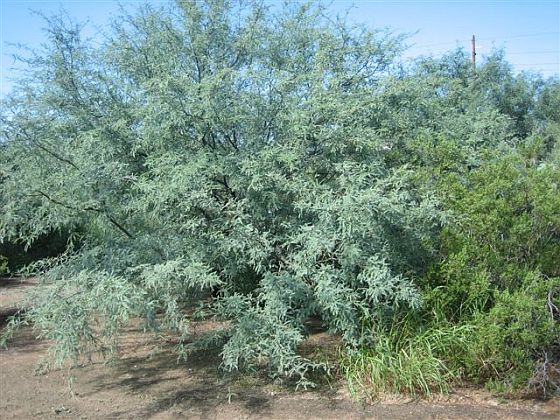
A mesquite tree. (Prosopis velutina) with a creosote shrub (Larrea tridentata) next to it. Creosote is responsible for the characteristic smell that the desert has after a rain. Both plants are native to Arizona.
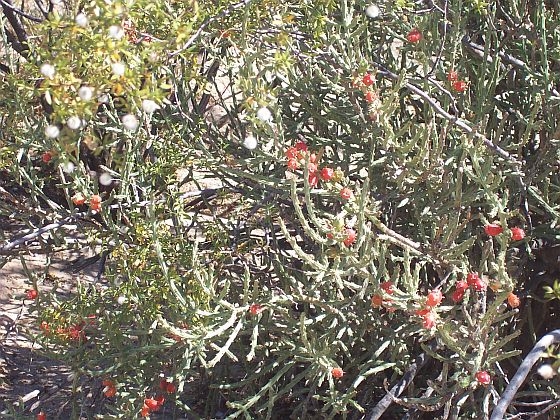
Christmas cholla (Opuntia leptocaulis) growing underneath the creosote. It is called this because of its red fruits that remain on the plant through much of the winter. It is native to Arizona.
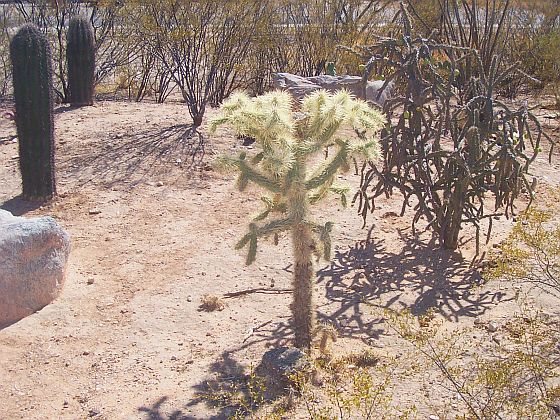
Cholla and saguaro in the cactus garden.
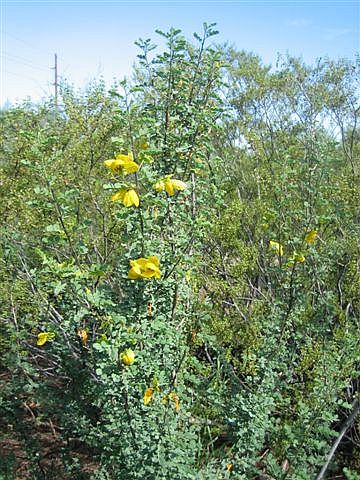
This flowering yellow shrub is Cassia wislizenii, a type of senna that is known for how very dead it looks in the winter (it has a long dormant period) and then how beautiful it looks during its short bloom period in late summer/early fall. It is native to the Sonoran desert (Mexico and parts of Arizona).
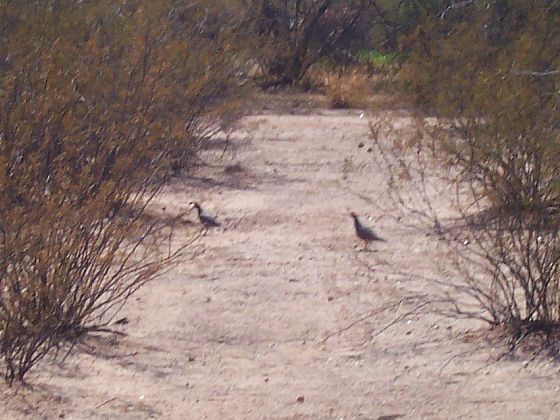
A pair of quail running between the bushes.
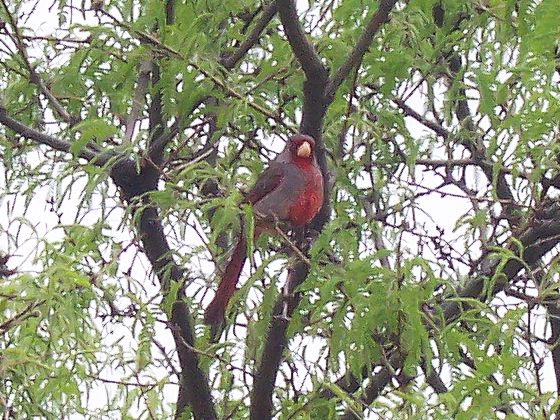
A desert cardinal (pyrrhuloxia) is nesting in a tree near the pond.
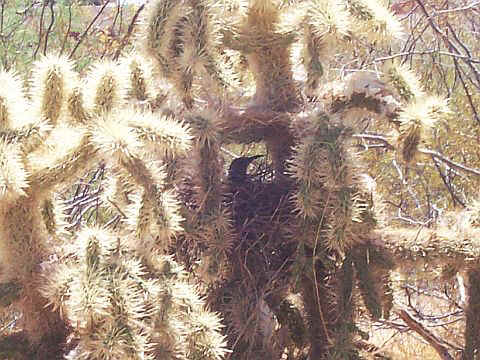
A curve-billed thrasher has returned to the same nest in a cholla near BELL’s entrance for the past few years.
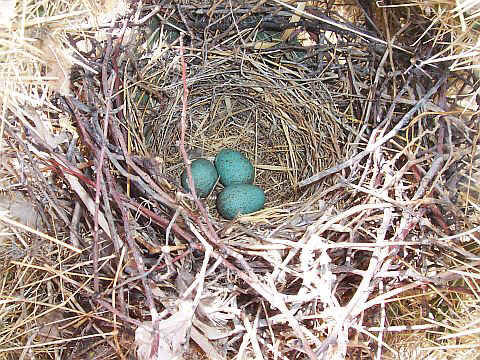
This year there were three eggs in the nest.
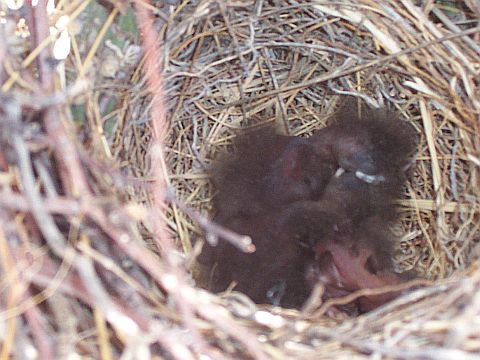
By the last day of school, the eggs had hatched.
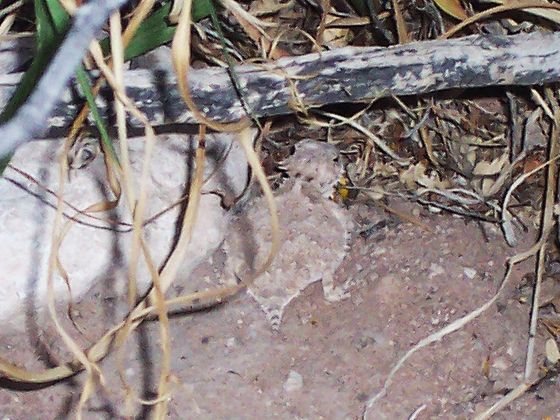
A horned lizard hiding near some leaves.
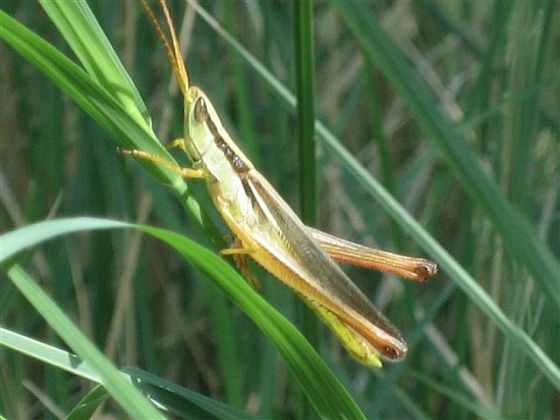
A grasshopper.
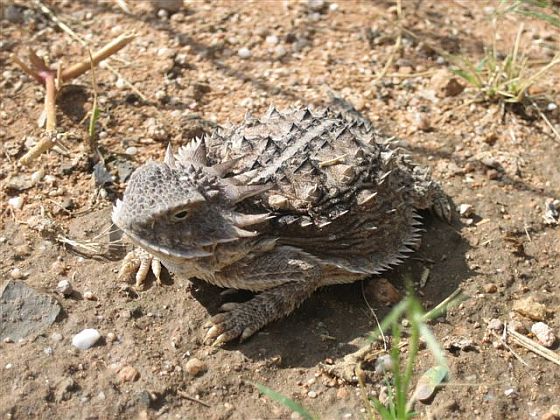
Another horned lizard.
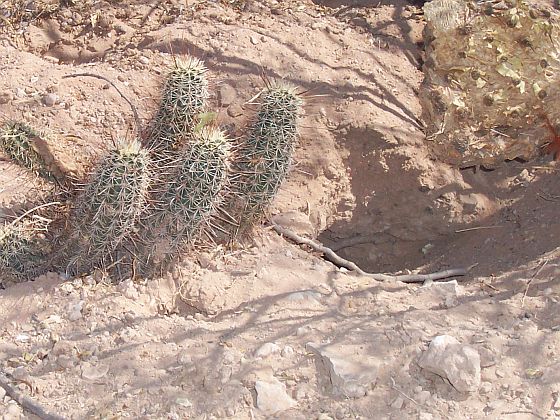
A hole dug by some small rodent under this cactus. The rodents living in BELL are hard to spot, but from holes like these we can tell that they're there.

A butterfly perched on some leaves.
In April, Old Rango finally arrived, moved into his new home.
